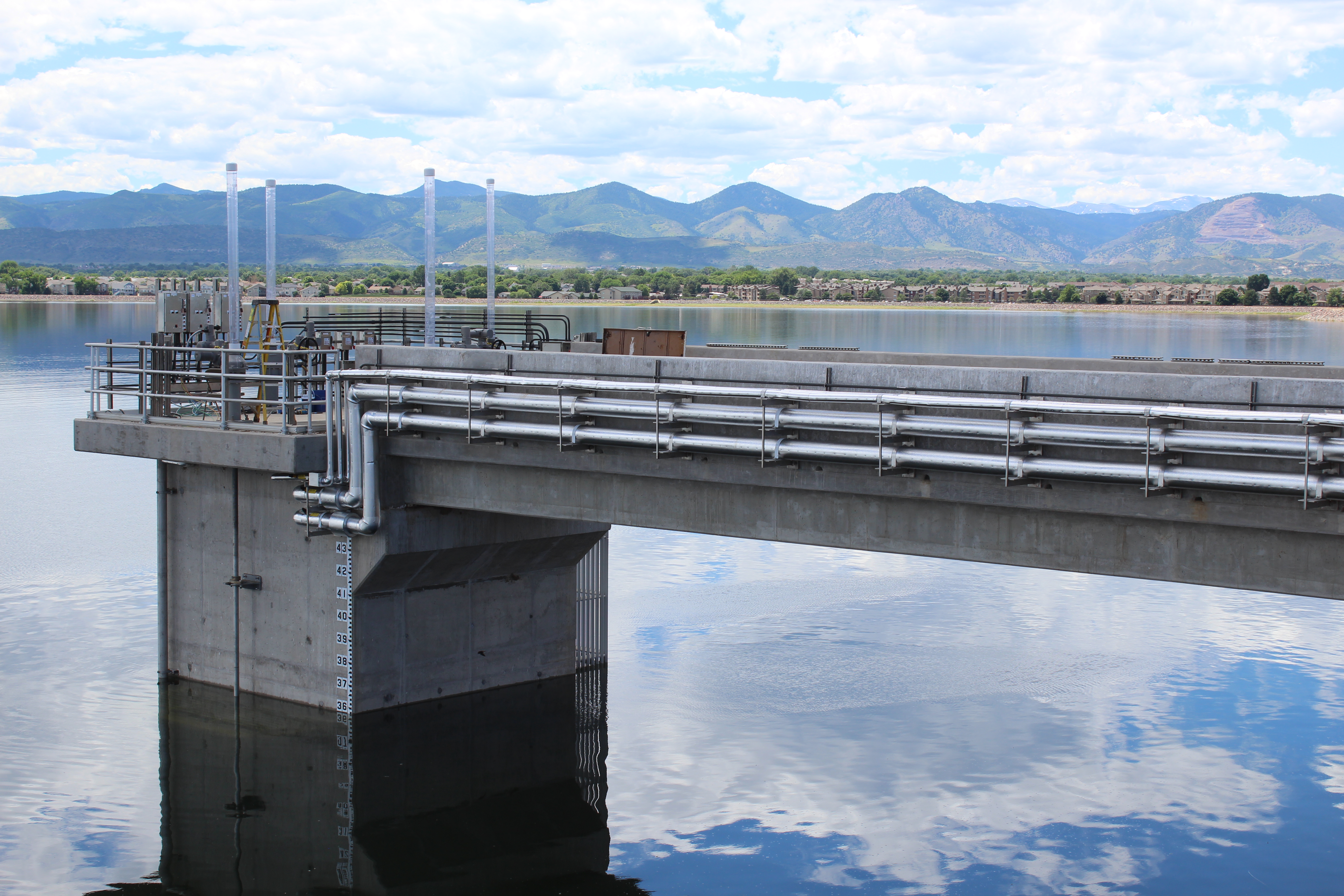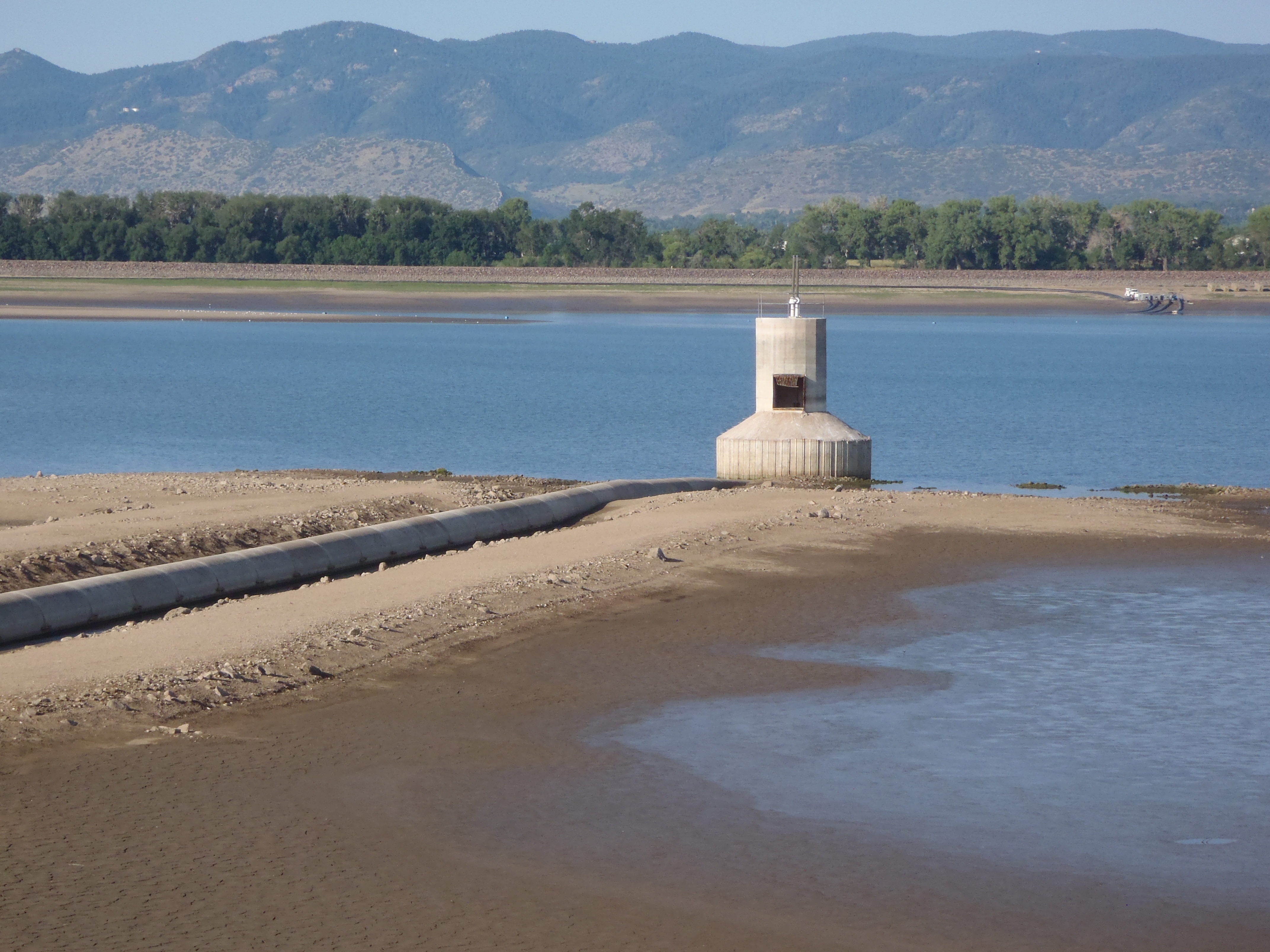
New 46-foot tower makes a big splash at Marston
The water went down and a new tower went up. And now a nearly 100-year-old reservoir has a modern way of delivering water.
Over the past 18 months, Marston Reservoir has undergone a $13 million makeover. The centerpiece of the project is a new 46-foot tall outlet tower on the northeast shore. Marston is considered one of Denver Water’s terminal reservoirs, which means it’s the last stop for mountain water before it heads to the treatment process.
“This is a huge project for Denver Water,” said Eric Swanson, Denver Water construction project inspector. And he should know. Swanson watched the tower grow every step of the way. “It’s really been a big team effort for the past year.”
The new tower uses modern technology and has a bridge to connect it with the dam. It was built not only to move water out of the reservoir, but also to improve the water treatment process.
“It’s a misconception that our water goes straight from the mountains to the tap. There’s actually a lot more to it,” said Patty Brubaker, manager of the Marston Treatment Plant.
The water in the reservoir can reach 68-feet deep at full capacity and has various characteristics at different depths, depending on the time of year. In the summer, for example, the water is warm at the surface and cool at the bottom. Oxygen levels, temperature, algae levels and turbidity (a measure of water clarity), among other factors, all change at different levels of the reservoir.
The new tower acts like a big blender, pulling water from different levels through three slide gates and sending the best mix to the adjacent treatment plant.
“We’re blending or selecting the best water so it’s easier for us to treat in the plant,” Brubaker said. “It saves us time, it saves us energy, it saves us in chemical costs, and in the end, we provide higher-quality water for our customers.”
The new tower replaces an old outlet pipe that was built in the 1920s and an outlet tower built in the 1960s. The old tower had slide gates that did not function properly and couldn’t capture low-level water in drought years.
And one other drawback: The old tower was in the middle of the lake, making it accessible only by boat.
The $13 million project included nearly draining the reservoir, breaching the dam, constructing a new 84-inch connection pipe and building a new emergency drain line to bring the dam up to state engineering standards.
“There’s a lot of hard work that happened over the last year to make this all happen,” Swanson said. “It’s too bad, a lot of the infrastructure we built is underwater, so no one will be able to see it unless they take a look at all the photographs I took.”
The new tower will come online this fall after a series of tests.
The impact of the project will be felt for years to come, Brubaker said. “Since the last drought, we realized that we really needed to have the ability to use this reservoir’s full capacity.”
And, she added, the project will benefit the entire system. “It allows us to provide the highest-quality and quantity water to our system and to our customers.”


